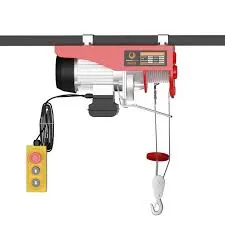


Handling Pallet Trucks Essential Techniques for Efficiency and Safety
Pallet trucks, also known as pallet jacks, are essential tools in the world of warehousing and material handling. They are designed to lift and move pallets—flat transport structures that support goods. Efficient handling of pallet trucks is vital for streamlining operations, ensuring safety, and minimizing potential hazards in the workplace.
Understanding the Basics of Pallet Trucks
Pallet trucks can be manual or powered. Manual pallet jacks rely on human strength to lift and maneuver loads, while electric pallet trucks use battery power to assist in lifting and moving. Regardless of the type, understanding the components of the pallet truck is crucial. Key parts include the forks, the pump handle, and the wheels, all of which contribute to the truck's overall functionality.
Importance of Training
Proper training is essential for anyone who operates a pallet truck. Operators should be familiar with the specific type of pallet jack they will be using, including its weight capacity, lifting mechanism, and operational controls. Training programs typically cover safety protocols, handling techniques, and emergency procedures. By ensuring that all personnel are adequately trained, companies can reduce the risk of accidents and improve efficiency.
Safe Handling Techniques
1. Inspection Before using a pallet truck, always inspect it for defects. Check the forks, wheels, and hydraulic system. Ensure there are no leaks, and the wheels are in good condition. If any issues are found, the truck should be reported and taken out of service until repaired.

2. Loading the Truck When loading a pallet truck, it is essential to distribute the weight evenly across the forks. Avoid overloading the pallet beyond the truck’s weight capacity, as this can lead to tipping and instability.
3. Lifting the Load To lift a load, pump the handle smoothly. Never attempt to lift a load that appears unsteady. It's advisable to keep the load as low to the ground as possible while moving to maintain a lower center of gravity, which aids in balancing.
4. Maneuvering the Truck When moving with a loaded pallet truck, always push the truck rather than pulling it. This provides better control and reduces the risk of accidents. Be mindful of your path—look out for obstacles like uneven surfaces, ramps, or people.
5. Safe Turning When turning with a loaded pallet truck, execute slow and wide turns. Rapid turns can cause the load to shift and lead to spills or accidents. Always check your surroundings to ensure a clear path.
6. Parking the Truck Once finished using the pallet truck, ensure it is parked in designated areas. Never leave it in a pathway where it can obstruct other workers. If the truck is electric, turn off the power when not in use.
Conclusion
Handling pallet trucks requires skill, attention, and adherence to safety protocols. Proper training coupled with awareness of safe handling techniques can significantly enhance workplace efficiency while preventing injuries. By implementing these best practices, organizations can create a safer working environment that optimizes the movement of goods. As industries continue to evolve, mastering the effective use of pallet trucks will remain a fundamental aspect of successful material handling operations.



